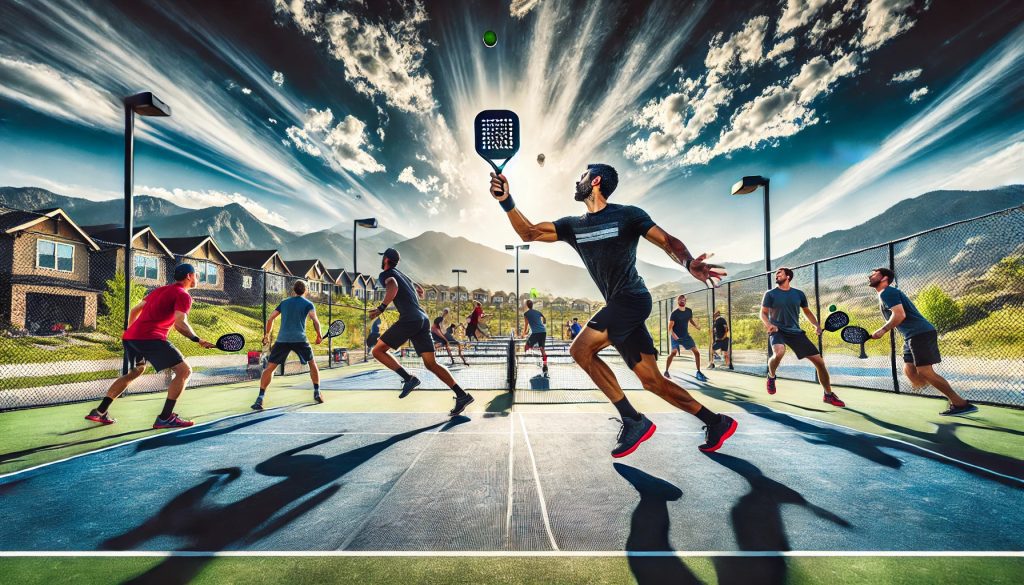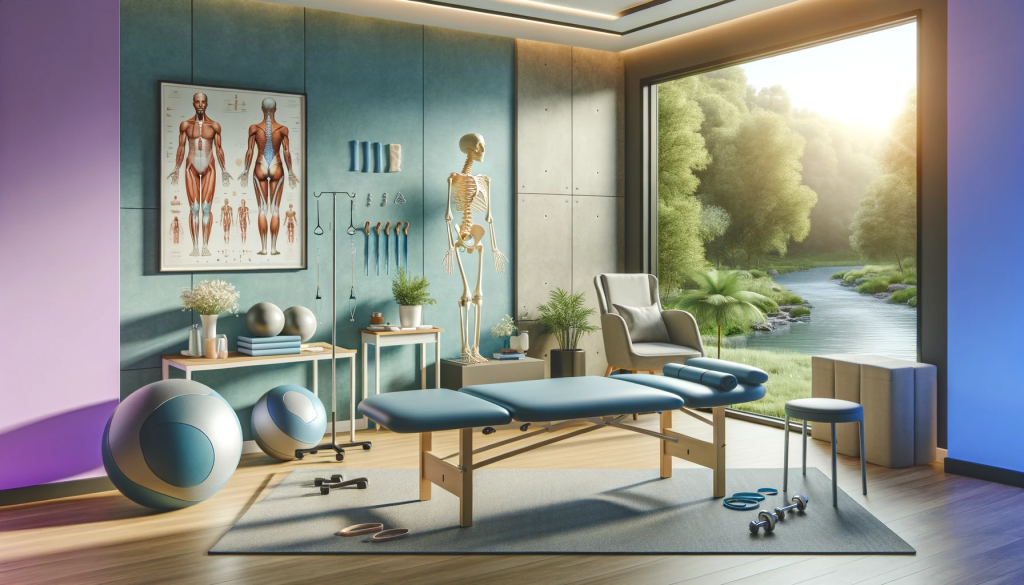Pickleball is sweeping the nation, and Arvada is no exception! Whether you’re new to the game or a seasoned player, it’s no secret that staying in shape is crucial to performing your best on the court. While the sport may seem like a casual game, it demands quick reflexes, agility, endurance, and strength. That’s where proper conditioning comes in. By incorporating targeted exercises, you can improve your game, prevent injuries, and enhance your stamina. In this article, we’ll dive deep into the best exercises for pickleball players, how to condition for the sport, and tips for boosting stamina so you can dominate on the court. Let’s get started!
The Importance of Conditioning for Pickleball
Like any other sport, pickleball requires a combination of strength, agility, and endurance. While it might seem easy to pick up, those intense rallies and quick pivots can quickly wear you out if you’re not physically prepared. Whether you’re playing singles or doubles, the constant movement and rapid shifts from offense to defense make conditioning essential. If you’re in Arvada and looking to improve your pickleball performance, specific conditioning exercises will help you not only play better but also reduce the risk of injuries like strains or overuse injuries.
What is the Best Exercise for Pickleball Players?
When it comes to pickleball, a mix of cardiovascular training, strength training, and agility work is key. Here are some of the best exercises for pickleball players:
1. Lateral Lunges
Pickleball involves a lot of side-to-side movements, especially when you’re rushing to return a ball or defend your position at the net. Lateral lunges target the muscles in your legs and hips, which are crucial for these side-to-side actions.
- How to do it: Start by standing tall with feet shoulder-width apart. Step to the side with one foot, bend your knee, and push your hips back. Keep your other leg straight as you lower yourself into a lunge position, then push back up and repeat on the other side.
2. Planks and Side Planks
Core strength is the foundation of stability and balance, both of which are critical for quick turns and power in pickleball. Planks help build that core strength without putting too much strain on your back.
- How to do it: For a basic plank, get into a push-up position but rest on your forearms instead of your hands. Keep your body in a straight line from head to heels, and hold the position for 30-60 seconds. For side planks, rotate to one side, stacking your feet on top of each other and holding yourself up with one forearm.
3. Jump Rope
One of the simplest yet most effective cardio exercises is jump rope. It enhances your footwork, timing, and cardiovascular endurance, all of which are crucial for long rallies in pickleball.
- How to do it: Grab a rope and jump in place, focusing on speed and consistency. Aim for 2-3 minutes of non-stop jumping, resting between intervals if necessary.
4. Wall Sits
Wall sits build endurance in your legs, making it easier to stay low and ready during a match. By strengthening your quads and glutes, you’ll feel less fatigued and more capable of staying agile.
- How to do it: Stand with your back against a wall and slide down into a seated position as if you’re sitting in an invisible chair. Hold the position for 30-60 seconds.
5. Burpees
This full-body exercise boosts your cardio and increases your strength. Burpees mimic the sudden bursts of movement you need on the pickleball court.
- How to do it: Start standing, drop into a squat, kick your legs back into a push-up position, perform a push-up, jump your feet back to your hands, and explode upwards into a jump. Repeat for multiple reps.
How to Condition for Pickleball
Conditioning for pickleball isn’t just about doing a few exercises here and there. It requires a well-rounded approach that focuses on strength, agility, endurance, and flexibility. Here’s how to condition effectively:
1. Cardiovascular Training
Pickleball matches can last a long time, and you’ll need endurance to keep up. Incorporate activities like running, cycling, or swimming to build your cardiovascular fitness. Interval training—short bursts of high-intensity work followed by rest—is particularly beneficial because it mimics the quick sprints you’ll experience during a match.
2. Strength Training
While pickleball doesn’t require the same muscle mass as weightlifting, building strength in key areas is essential for power and injury prevention. Focus on compound exercises like squats, lunges, deadlifts, and shoulder presses, which will help you generate power during serves and shots.
3. Agility Work
Agility is one of the most important aspects of pickleball. Practicing quick, controlled movements will improve your ability to move around the court efficiently. Use an agility ladder or set up cones to practice drills that focus on quick lateral and forward/backward movements.
4. Flexibility and Mobility
Staying flexible helps you reach for those hard-to-get shots without pulling a muscle. Yoga, dynamic stretching, and foam rolling are great ways to maintain and improve flexibility and mobility. Target your hips, shoulders, hamstrings, and calves—these areas tend to tighten up after intense matches.
How to Increase Stamina for Pickleball
Stamina is crucial in pickleball, especially for long games or tournament play. Running out of gas halfway through a match can cost you points. To build stamina for pickleball, consider the following tips:
1. Interval Training
As mentioned before, interval training helps boost your endurance by alternating between high-intensity efforts and recovery. You can use interval running, cycling, or rowing to build stamina. For example, sprint for 30 seconds, rest for a minute, and repeat.
2. Longer Cardio Sessions
While interval training is great for quick bursts of energy, you’ll also need a strong aerobic base. Aim for longer, steady cardio sessions, such as jogging or cycling for 30-45 minutes, a few times a week.
3. Incorporate Active Recovery
You don’t always have to go all out. On your off days, practice active recovery by doing light activity, such as walking, swimming, or yoga. This helps keep your body moving without adding additional strain on your muscles.
4. Hydration and Nutrition
Stamina isn’t just about physical training—it’s also about how you fuel your body. Make sure you’re staying hydrated throughout the day, especially before and after games. Eating a balanced diet rich in carbohydrates, proteins, and healthy fats will also ensure your body has the energy it needs to sustain long matches.
5. Consistency is Key
Like with any sport, consistency is essential. Make sure you’re sticking to your conditioning plan. As you build endurance, you’ll notice that you can last longer in matches without feeling fatigued.
Pickleball-Specific Drills to Try
Incorporating drills that mimic actual gameplay can greatly improve your pickleball conditioning. Here are a few drills to try:
1. Side-to-Side Shuffles
Set up cones about 10 feet apart. Shuffle laterally between the cones as quickly as you can, focusing on staying low and maintaining control. This drill will improve your agility and ability to quickly change direction.
2. Footwork Drills
Lay out an agility ladder and practice various footwork patterns, such as quick steps in and out of the squares. These drills will help you develop fast, precise footwork, which is crucial in pickleball.
3. Reaction Drills
Stand a few feet away from a wall and toss a ball at it. React quickly to catch the ball after it bounces. This drill improves hand-eye coordination and reaction time, essential skills on the pickleball court.
Conclusion
Pickleball is more than just a fun pastime—it’s a fast-paced, dynamic sport that requires proper conditioning if you want to play at your best. By focusing on cardiovascular endurance, strength, agility, and flexibility, you can significantly improve your performance on the court. Whether you’re playing for fun or competing in tournaments, conditioning will help you play smarter, move faster, and stay injury-free. If you’re in Arvada and want to elevate your game, incorporating these exercises and drills will help you train smarter and play better. So grab your paddle, hit the court, and get ready to show off your improved skills!
Check out our Facebook!
FAQs
What muscles should I strengthen for pickleball?
Focus on strengthening your legs (especially quads, hamstrings, and calves), core, shoulders, and arms to improve power and agility on the court.
How often should I train for pickleball?
Aim to condition 3-4 times a week, incorporating strength, cardio, and flexibility exercises into your routine.
Can I improve my pickleball performance without going to the gym?
Yes! Many bodyweight exercises like lunges, planks, and agility drills can be done at home or on the court without equipment.
How do I avoid injuries in pickleball?
Stay flexible, warm up before matches, and incorporate strength training into your routine to avoid strains and overuse injuries.
Is running good for pickleball conditioning?
Yes, running helps build the endurance needed for long matches, especially when combined with interval training to mimic in-game bursts of activity.






